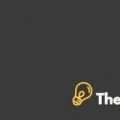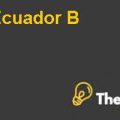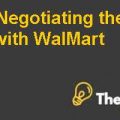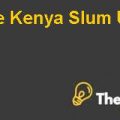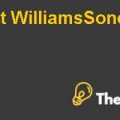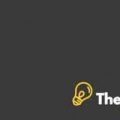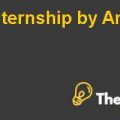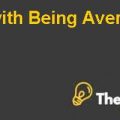Campbell Soup Company Case Study Solution
Physical Presence:
According to Douglas, the physical presence of the leader is very important as it breaks the ice between leaders and employees.The physical presence of the leader is the best way to connect with the subordinates especially in the circumstance when a rapid acknowledgment is necessary. In order to change the environment and working together, Douglas used to walk in the halls while talking with its subordinates. Through this strategy,the leader could know what their subordinates think and subordinates could convey their concerns to the leader directly. Douglas’ main objective behind this strategy was to promote engagement so, the leader and employees could work collectively.
Job Rotation:
Douglas took another initiative and rotate the jobs of its subordinates according to their expertise. In almost 18 months he replaced almost 350 top leaders. He believes that in order to achieve the goal, the right must be in the right place. Most of the same jobs build monotony which decreases the productivity of the employees. Therefore, job rotation is considered as a great strategy to increase the performance of the subordinates.
Good to Great
According to Jim Collins, the leaders must work on three things including disciplined thought, disciplined people and disciplined action plan in order to transform from good to grate. One the company has achieved these three goals, it would take almost a good seven years to transform from good to great. The situation of Campbell Soup Company was worst. Therefore, the company took almost nine to ten years to transform the culture of the company. Campbell Soup Company’s flywheels started working. Douglas initiated and evaluated the progress continuously, therefore, the company started growing and the growth was sustainable even in economic crises. The actions of the employees were aligned with goals. The company wants this flywheel to keep going in order to keep the engagement up throughout the entire company. Employee engagement, the right people at the right place, ongoing flywheel, increased productivity and performance and scores of Gallup Q12 could be considered as the measurement to determine the success of the company. Dougal’s Campbell Leadership model transformed the culture and now the workforce is able to work far better than other competitors in economic crisis as well. The company faces new challenges each year, but because of the efforts of Douglas, employees take the problem as a challenge.
Recommendations
According to my analysis, Douglas’s strategies were appropriate according to the situation.The desired change in an organizational culture could be reinforced thorough understanding of organizational culture, changed practices, and organizational design and models. An organization’s culture affects the performance of the employees, their motivation and job satisfaction. In order to attain success, the leader should provide a flexible environment, engage the employees in the discussion, ask for their opinion and work collaboratively. Flexible culture leads to an increase in better teamwork, innovative ideas, and clear goals. Employee’s satisfaction and high morale, and the combination of these factors bring out favorable outcomes for the leaders as well as the organization. Therefore, it could be said that Dougal’s strategies were appropriate according to situation and if the company faces similar situation in future, the company should check whether their employee’s engagement is high, leader and subordinates are connected with each other or not and whether people are working according to their interest and expertise or not.
Conclusion
Leaders could transform the organizational culture through their leadership styles. Leaders influence the culture of an organization through their values, skills, abilities, example, practices, and strategies. Therefore, it could be said that the culture of the organizations reflects their leaders. A wrong leadership style could be a reason behind the toxic culture of the workplace. Organizational culture impacts and influences the ability to motivate, attract and retain employees, productivity and morale of its employees and effectiveness and performance of the company. There are many contingency and situational leadership theories, which emphasize on the best way of leading. Therefore, Leaders must have the ability to diagnose which leadership style is appropriate to deal with different situations.A leader must be able to build a strong culture through which he could bring out the best in people (his followers).Leaders could transform the organizational culture through their leadership styles. Leaders influence the culture of an organization through their values, skills, abilities, example, practices, and strategies. Therefore, it could be said that the culture of the organizations reflects their leaders (James C. Sarros, 2008). Moreover, the Campbell Leadership Model worked very well, because Douglas identified that major issue of the company was “engagement”. Therefore, he worked followed different strategies to get people disciplined, disciplined thought and disciplined action plans………….
This is just a sample partical work. Please place the order on the website to get your own originally done case solution.
How We Work?
Just email us your case materials and instructions to order@thecasesolutions.com and confirm your order by making the payment here

